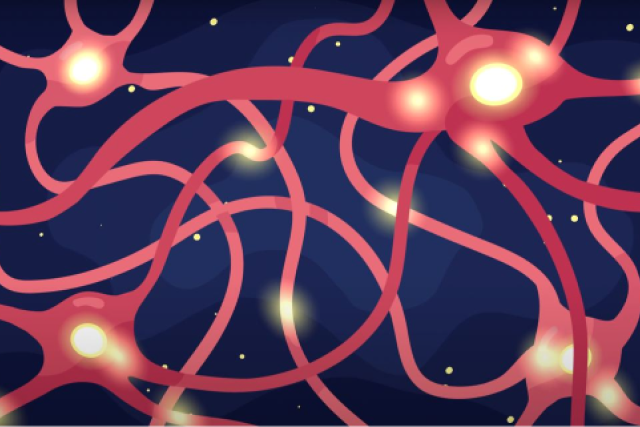Tactile Sensitivity
Cognitive neuroscientist Patrick Haggard on the Pacinian corpuscle, three attributes of the tactile sensations...

Today, we frequently encounter terms like “neurointerfaces” and “neuroprosthetics,” it seems obvious to us that a computer can be connected to the brain. But how do neurointerfaces work, what possibilities do they open up, and what are the prospects for their application?
Many believed Aristotle. His views influenced for centuries until two scientists, Camillo Golgi and Santiago Ramón y Cajal, decided to look at the brain under a microscope. They saw neurons of various shapes, with different processes, connected differently in various parts of the brain. They realized that thinking processes and the processing of sensations and motor commands occur in the brain. Their research laid the foundation for modern neuroscience. Both scientists received the Nobel Prize, but Ramón y Cajal emphasized that the brain consists of neurons and that a neural network can be constructed from them, while Golgi was not fond of the idea of such elementary units. He preferred the concept of a network where everything is intertwined. Thus, both had somewhat different views on how the brain works, but they received the Nobel Prize.
Ramón y Cajal’s neuron doctrine and Golgi’s theory are still followed today. There are ongoing debates: some scientists emphasize the importance of the neuron and its operations, while others highlight the neural network and the distributed processing of information in the brain.
Neuroscience evolved, and for a time, Cajal’s ideas prevailed: neurons were discovered, and it became clear how they were connected and transmitted information. Indeed, a neuron is a complete entity. It consists of a cell body, dendrites that receive information, an axon that transmits information to other neurons, and synapses—the contact points between two neurons where information is transmitted from one neuron to another. According to this scheme, the brain resembles an electronic circuit. Neurons can be excitatory or inhibitory. If you take a certain number of both types of neurons, connect them, and devise a specific scheme, they will work as intended.
Everything was fine until the realization came that Golgi was also right about some aspects. For instance, neurons can form electrical synapses through which ions can freely pass. Neurons turned out to be not as elementary as previously thought. For example, in the cerebral cortex, inhibitory interneurons form a network connected by electrical synapses. It was also discovered that a working neuron emits electromagnetic fields that can affect nearby neurons. This was called ephaptic transmission. Some researchers now believe it may play a functional role.
We know some things, but much more remains unknown. However, this does not stop developers of brain-computer interfaces, who have ambitious goals: They want to record brain activity, decode it, and then use the recorded information to solve specific tasks.
There are people with neurological damage, such as paralysis or spinal cord injuries. It is hypothesized that signals from the brain can be recorded in such patients, decoded, and then directed to a prosthetic arm or leg. This would enable these individuals to move and feel.
There is also discussion about the possibility of expanding brain functions: a person connects to a device that reads their brain activity, which is then decoded and sent to a computer, helping to expand functions. There are even more futuristic ideas for future projects, such as interfaces involving the brains of several people exchanging information.
For example, a paralyzed person intends to move a prosthetic. The desired hand position must be decoded. The coordinates of the prosthetic are determined and directed to the desired point in space, allowing the person to control the prosthetic’s movements with their brain activity via the neurointerface.
The prosthetic can be equipped with various sensors; for instance, the artificial hand’s fingers may have tactile sensors. When the hand touches objects, this activity can be sent back to the brain’s sensory areas to evoke sensations in the person. Thus, a prosthetic is controlled directly by brain signals and can send information back to the brain, making the person feel it is almost like their own body part. There is hope that prolonged use of such a prosthetic due to brain plasticity, will make the device indistinguishable from natural human body parts. There are also discussions about the need for a third arm in certain conditions, and such ambitious goals are being set.
We see rapid development of neurointerfaces, but we are at the beginning of the journey: we do not yet see people on the streets controlling neurointerfaces. All this is still in laboratories or special demonstrations. However, eventually, neurointerfaces will enter our lives and become part of our everyday reality.

Cognitive neuroscientist Patrick Haggard on the Pacinian corpuscle, three attributes of the tactile sensations...

Neuroscientist Diana Omigie on tuning systems in different cultures, congenital amusia and aspects that influe...

Neuropsychologist Barbara Sahakian on cognitive training, areas of the brain that get affected in Alzheimer's ...